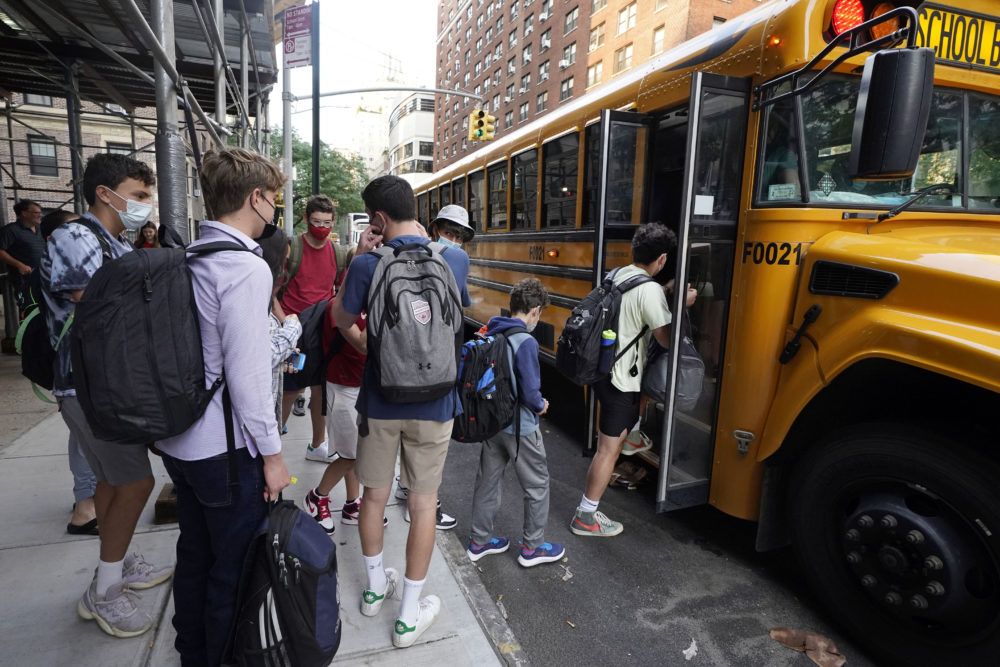Ask anyone in the youth development field what the greatest crisis facing afterschool programs is and you’ll likely get the same answer: A nationwide shortage of workers.
Afterschool programs across the country are struggling to hire enough workers, jeopardizing the nation’s efforts to utilize these programs as a key resource to help kids catch up academically — and adjust emotionally — after a fraught year and a half of loss and isolation during the pandemic.
 Low wages combined with the added stress of potential infection and navigating Covid-19 safety protocols have exacerbated hiring challenges. Managers say they see fewer and less qualified applicants responding to job postings.
Low wages combined with the added stress of potential infection and navigating Covid-19 safety protocols have exacerbated hiring challenges. Managers say they see fewer and less qualified applicants responding to job postings.
“We can’t find enough staff,” said Michael Funk, who oversees afterschool programming for the California Department of Education.
It’s gotten so bad in California during the pandemic, said Funk, that some programs only have the capacity to serve half the children they’re funded to serve, despite an increase in funding and need.
“It’s a challenge that doesn’t have an easy solution,” Funk said.
In a survey conducted by the Afterschool Alliance over the summer, 57% of programs that responded were concerned about hiring enough staff. That is despite an estimated $30 billion in federal pandemic aid that can be tapped for afterschool programs.
“The pandemic has really unearthed some of the challenges that were already existing in our field — primarily around staffing,” said Jodi Grant, executive director of the Afterschool Alliance.
The nationwide shortage of afterschool workers is not new, but it has gotten worse. Historically, low wages, part-time hours and no benefits have long dogged the industry, making it a challenge to recruit and retain staff.
“Youth development and youth workers have been traditionally underpaid and asked to do a lot of work,” said Carol Hill, executive director of the San Francisco Beacon Initiative, which includes 27 afterschool programs in San Francisco. “It’s not that glamorous of a position.”
At Beacon, Hill said, they could use at least 25 workers but ideally 50 new employees to meet the increasing demand and provide the best service.
Hill would like to see the wage raised to $25 an hour. To get there, “We’re gonna have to be super creative.”
At the beginning of the pandemic, many governments gave frontline afterschool workers a bump in pay — anywhere from an extra $5 to $15 an hour — Hill said. That money has since dried up, yet the pandemic hasn’t ended and workers don’t want to come back for lower pay, she added.
“They want to get paid for the work that they do,” Hill explained. “We have to figure out what we’re going to do about raising funds to make these positions more attractive to people.”
To help afterschool programs manage, the Afterschool Alliance has put together a recruitment kit to help and offers tips for how to tap existing networks — alumni, parents, partner organizations — as well as using social media to promote positions.
In San Francisco, workers get paid, on average, $16 an hour, which is not a living wage in a city where the median 1-bedroom apartment rents for nearly $2,800 a month.
Hill would like to see the wage raised to $25 an hour. To get there, “We’re gonna have to be super creative,” Hill said, echoing the sentiment of the field.
Many afterschool programs, especially ones serving low-income families, rely on federal funding, which has fixed reimbursement rates per kid per hour. So even when wages rise, reimbursement rarely keeps up, forcing programs to adjust staff-student ratios to make up for the increase in expenses.
To increase wages, programs will need more public and philanthropic dollars. Some of the Covid-19 relief funding could be used to bolster wages in the short term.
One long-term solution many advocates point to is to professionalize the field. That is, create pathways from high school to college and that would then funnel back into working with kids in elementary and middle schools.
Afterschool programs would then be stepping stones to working in education and would help with ongoing efforts to hire college students, who typically have health care through their schools and do not require those particular job benefits.
One bid to make jobs more attractive is trying to make them full-time. That requires stitching together a patchwork of positions to create a full-time role.
Another way to address the shortage is by partnering with organizations. The Afterschool Alliance is recommending programs tap AmeriCorps to inquire if its members and volunteers can help.
In California, Funk aims to draw on seniors to help fill the workforce gaps in afterschool programming.
To help Funk reach seniors, he is collaborating with AARP, the national organization for retired people that boasts 38 million members.
“We’re looking at ways to tap into pools for the workforce that we might not have thought about in the past,” Funk said.




























